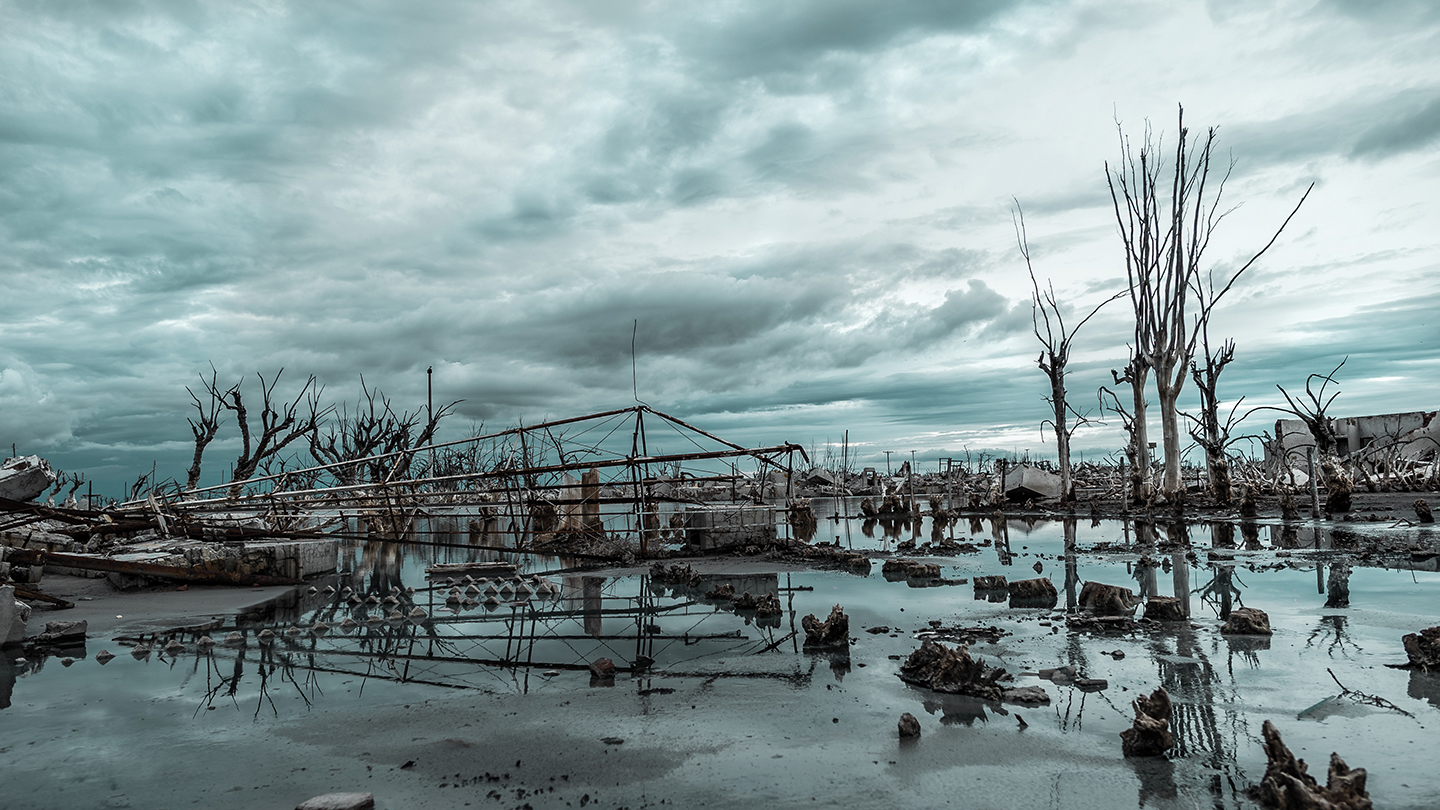Limiting the environmental impact of explosive weapons
Published in The Ploughshares Monitor Volume 44 Issue 3 Autumn 2023
The International Committee of the Red Cross (ICRC) defines explosive weapons as “munitions activated by the detonation of a high-explosive substance, creating primarily a blast and fragmentation effects, and their delivery systems.” These weapons kill or maim many civilians, destroy infrastructure, and damage the natural environment. In all these ways, they threaten human and global security.
Civilians unduly harmed
Explosive weapons in populated areas (EWIPA) disproportionately harm civilians. Data assembled by Action on Armed Violence indicates that 90 per cent of those killed and injured by EWIPA are civilians. And this source of harm can linger – sometimes for decades – because some explosive weapons fail to detonate on initial impact. Unexploded ordnance (UXO) can detonate long after a conflict has ended, killing and maiming a new generation.
Harm to the built and natural environments
The damage that explosive weapons cause to human infrastructure threatens the health and wellbeing of people (and other creatures) residing in the conflict zone – and sometimes far beyond it. As we see in Ukraine, Iraq, Yemen, and Syria, the use of explosive weapons cuts off access to clean water, compromises sewage systems and other critical infrastructure, releases hazardous materials and fumes into the environment, hinders the provision of medical treatment, and contributes to the outbreak of communicable diseases.
Explosive weapons also harm and destroy the natural environment, causing wildfires and floods. This damage is amplified by the effects of climate change – extremely high temperatures and violent storms.
Mitigating the environmental impact
Recent diplomatic, legal, and political actions indicate a growing interest in mitigating the environmental consequences of explosive weapons, particularly in populated areas.
In late 2020, for example, the ICRC released a new version of its Guidelines for Military Manuals and Instructions on the Protection of the Environment in Times of Armed Conflict – the first update since the guidelines were released in 1994. The 2020 version sets out “rules and recommendations relating to the protection of the natural environment under international humanitarian law (IHL).” IHL includes, for example, the Rome Statute of 1998, which labels causing widespread, long-term, and severe damage to the natural environment a war crime.
Explosive weapons also harm and destroy the natural environment, causing wildfires and floods. This damage is amplified by the effects of climate change – extremely high temperatures and violent storms.
In 2022, the United Nations (UN) International Legal Commission released a set of draft principles concerning the protection of the environment in relation to armed conflicts; these principles were then recommended to the UN’s General Assembly. The UN Security Council has also recently discussed the conflict-environment nexus, although some UNSC members continue to question any direct connection between climate change and armed conflict.
Existing arms control agreements already include some obligations relating to environmental protections. For example, the Anti-Personnel Mine Ban Convention and the Convention on Cluster Munitions both require that requests to delay explosive ordnance clearance include information on the environmental impacts of delays.
A political declaration on EWIPA, minus environmental protections
The Political Declaration on Strengthening the Protection of Civilians from the Humanitarian Consequences arising from the use of Explosive Weapons in Populated Areas was formally adopted by 83 states in November 2022. Declared a “milestone declaration” by the ICRC, it obliged signatories “to help avoid civilian harm, including by restricting or refraining as appropriate from the use of explosive weapons in populated areas. when their use may be expected to cause harm to civilians or civilian objects” (Article 3.4). If universally adopted, the declaration could significantly alleviate civilian suffering and increase respect for IHL.
However, the final version of the declaration mentions the environment only once, in the preamble: “The environment can also be impacted by the use of explosive weapons, through the contamination of air, soil, water, and other resources.” While these effects have obvious consequences for humans, the declaration says nothing about mitigating them.
Even with this significant omission, this declaration should be viewed positively, as the first in a series of actions that aim to limit the harm, including environmental harm, caused by explosive weapons. It should be seen as a floor rather than a ceiling, with signatories encouraged to implement measures that go beyond what is required.
Keeping the environment in the picture
Armed conflict has devastating effects on the environment, killing flora and fauna, and damaging forests and fields and wetlands. But such losses are seldom given due consideration, either during an armed conflict or after hostilities end. We must recognize that the natural environment’s wellbeing, health, and survival are inseparable from our own.
Explosive weapons have caused the environment profound harm; recovering from that damage will require large amounts of financial and political support, preferably as part of a larger effort to combat climate change. Thus, future peace talks must devote attention to environmental protection and remediation.
This approach should apply to Ukraine because the Russian invasion has profoundly harmed both the natural and built environments. For example, the destruction of the Nova Kakhovka dam has caused widespread flooding; shelling has triggered wildfires; and the deployment of a great number of gas-powered armoured vehicles has dramatically increased the volume of greenhouse gases released into the atmosphere.
Whenever they take place, peace talks to resolve the conflict in Ukraine should attend to the need to reconstruct the natural as well as the built environments. The end goal should be a green and sustainable peace.
Morgan Fox has an Honours BA in politics, philosophy, andeconomics from Queen’s University in Kingston, Ontario. She was a PloughsharesPeace Research intern in summer 2023.

